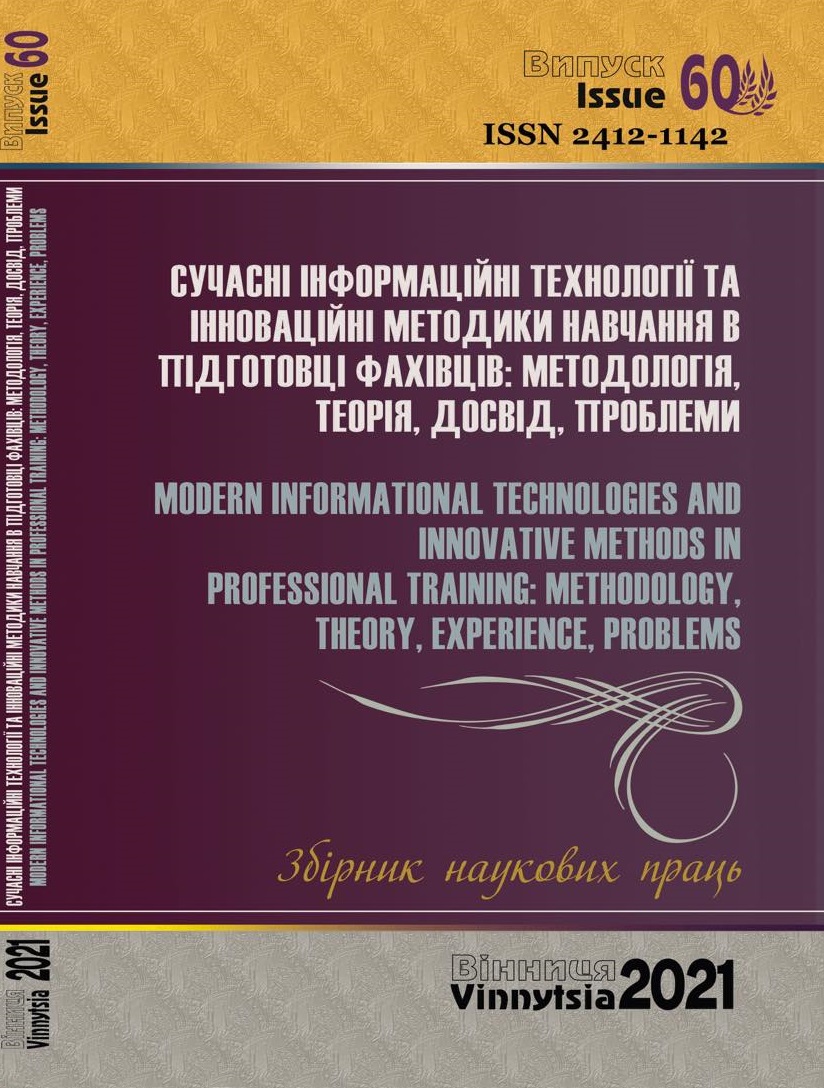THE USE OF CONCEPT MAPS MADE WITH CMAPTOOLS IN THE CLASSICAL MECHANICS TEACHING IN MEXICAN PROFESSIONAL EDUCATION
DOI:
https://doi.org/10.31652/2412-1142-2021-60-337-345Keywords:
innovative teaching technology; teaching of classical mechanics; Mexican Professional Education; Mechanical Engineering Degree Programs; conceptual maps made with CmapToolsAbstract
This paper presents the results of a scientific pedagogical research, which goal was to reveal,
how the using of the concept maps made with CmapTools, helps in the teaching of classical mechanics in
Mexican professional education. In particular, the results obtained from the study carried out in National
Polytechnic Institute of Mexico, are presented. Authors found, that metallurgical engineering students more
successful learn the basic concepts of classical mechanics by creating conceptual maps with CMapTools.
The way in which such conceptual maps must be carried out, implies preparation by the teacher of good
content quality evaluated with a semantic evaluation rubric. According to the study carried out, this
innovative teaching technology improved understanding of classical mechanics, affects positively the
significant learning of the basic concepts of classical mechanics and increased students ́ motivation to study
these aspects of mechanics.
Downloads
References
Ausubel, D. P. (1976). Psicología Educativa. Un punto de vista cognoscitivo. México: Trillas.
Ausubel, D. P. (2000). The Adquisition and Retention of Knowledge. Dortrecht, Netherlands: Kluwer.
Ausubel, D. P. (2002). Adquisición y retención del conocimiento. Una perspectiva cognitiva. Barcelona: Paidós.
Díaz Barriga, A. F., & Hernández, R. G. (2002). Estrategias docentes para un aprendizaje significativo. México:
McGraw-Hill.
Campos Arenas, A. (2005). Mapas conceptuales, mapas mentales y otras formas de representación del
conocimiento (Primera ed.). México, Cooperativa Editorial Magisterio.
Características y Ventajas de CmapTools. (Junio de 2021). Obtenido de CmapToolsGratis:
https://cmaptoolsgratis.com/caracteristicas-y-ventajas-de-cmaptools/
Catalán, L. C., Serrano, G. M., & Concari, S. B. (2010). Construcción de significados en alumnos de nivel básico
universitario sobre la enseñanza de física con empleo de software. Revista mexicana de investigación educativa,
(46).
Chrobak, R. (2004). Uso de estrategias facilitadoras del aprendizaje significativo en los cursos de física
introductoria. Universidad Nacional del Comahue, Facultad de Ingeniería, Río Negro, Patagonia Argentina.
CmapTools. (Junio de 2021). Obtenido de EcuRed: https://www.ecured.cu/CmapTools
Escamilla, M. A. (2010). Identificación y valoración de variables vinculadas al uso de las TIC como estrategia de
enseñanza-aprendizaje en la Universidad Autónoma de Querétaro, México. Tesis Doctoral, Universidad Autónoma
de Querétaro.
Ferreyra, A., & Gonzalez, E. M. (2000). Reflexiones sobre la enseñanza de la física universitaria. Enseñanza de
las Ciencias, 18(2), 189-199.
Gómez Mercado, B. I., & Oyola Mayoral, M. C. (2012). Estrategias didácticas basadas en el uso de TIC aplicadas
en la asignatura de física en educación media. Escenarios, 10(1), 17-28.
Instituto Politécnico Nacional (2018). UPIIZ. Recuperado el 24 de Mayo de 2018, de Mapa curricular Metalúrgica:
http://www.zacatecas.ipn.mx/OfertaEducativa/Documents/MAPA_CURRICULAR_METALURGICA.pdf
Novak, J. D. (1991). Clarify with concepts maps. The Science Teacher, 58(7), 45-49.
Novak, J. D. (1997). Retorno a clarificar con mapas conceptuales. En M. A. Moreira, C. Caballero, &
M. L. Rodríguez Palmero, Actas del Encuentro Internacional sobre el Aprendizaje Significativo (pp. 65-84).
Burgos, España.
Novak, J. D., & Gowin, D. B. (1984). Learning how to learn. Cambridge: Cambridge University Press.
Mejores programas para hacer mapas conceptuales. (Junio de 2021). Obtenido de Marketing and web:
https://www.marketingandweb.es/marketing/programas-para-hacer-mapas-conceptuales/
Moreira, M. A. (2000). Aprendizaje significativo: teoría y práctica. Madrid: Visor.
Moreira, M. A. (2014). Enseñanza de la física: aprendizaje significativo, aprendizaje mecánico y criticidad. Revista
de Enseñanza de la Física, 26(1), 45-52.
Rodríguez, J. A., Cegarra, J., & Díaz Caceres, J. J. (2014). Las TICs como estrategias para el aprendizaje del
equilibrio químico en estudiantes de educación superior: una experiencia en el curso intensivo del núcleo
universitario “Rafael Rangel”, en Trujillo. Revista Academia, 13(29), 33-43.
Downloads
Published
Issue
Section
License
Copyright (c) 2021 Галі-Олександра Бельтран, Олена Жижко

This work is licensed under a Creative Commons Attribution 4.0 International License.

